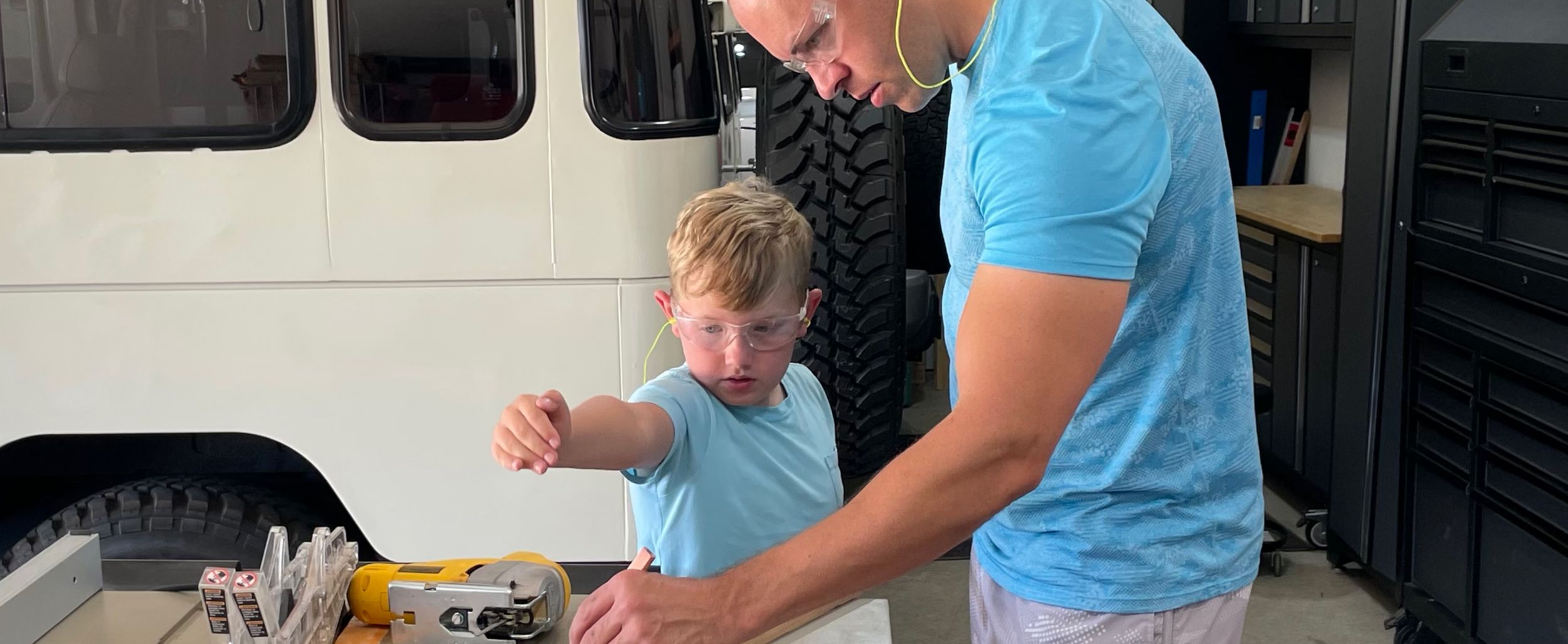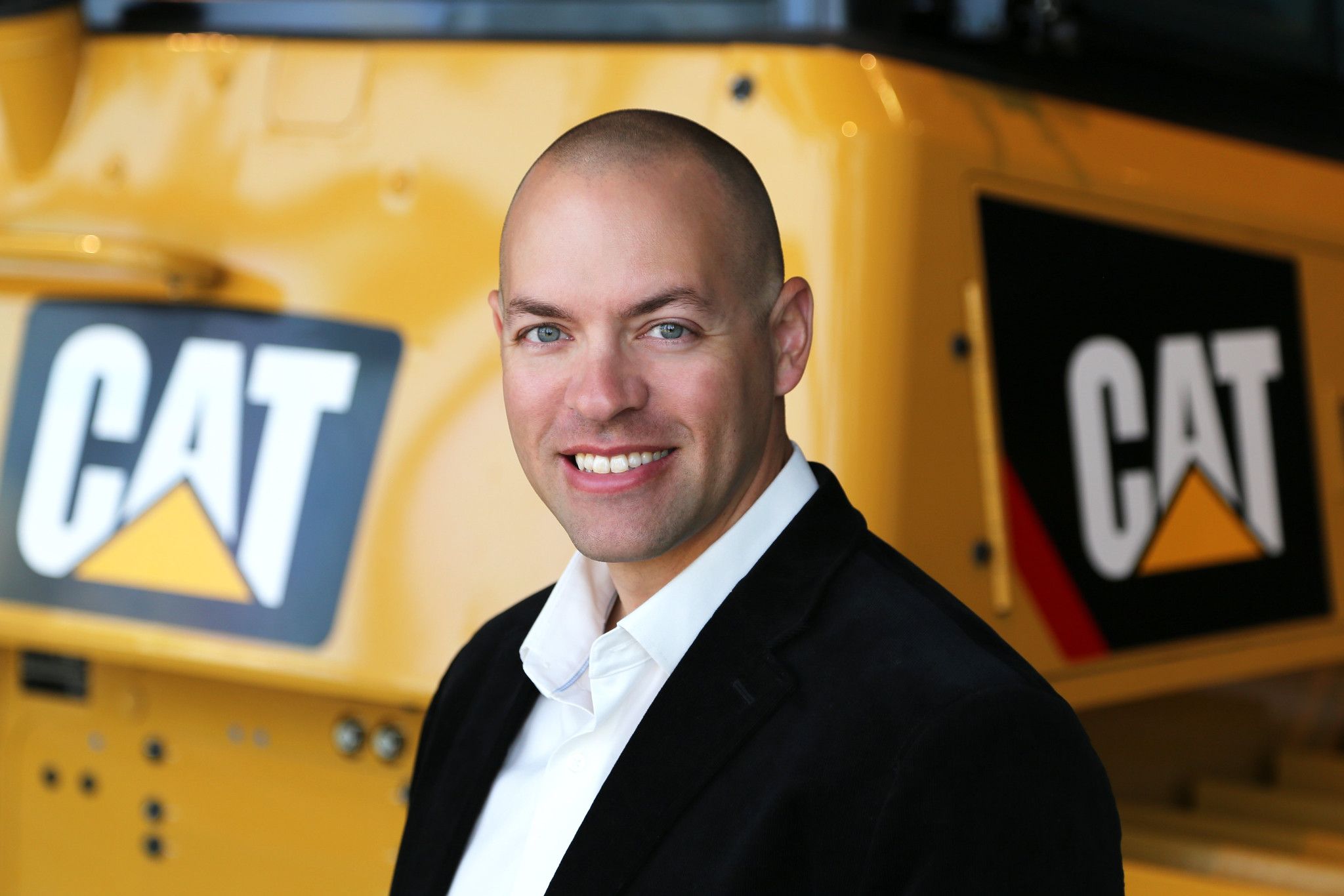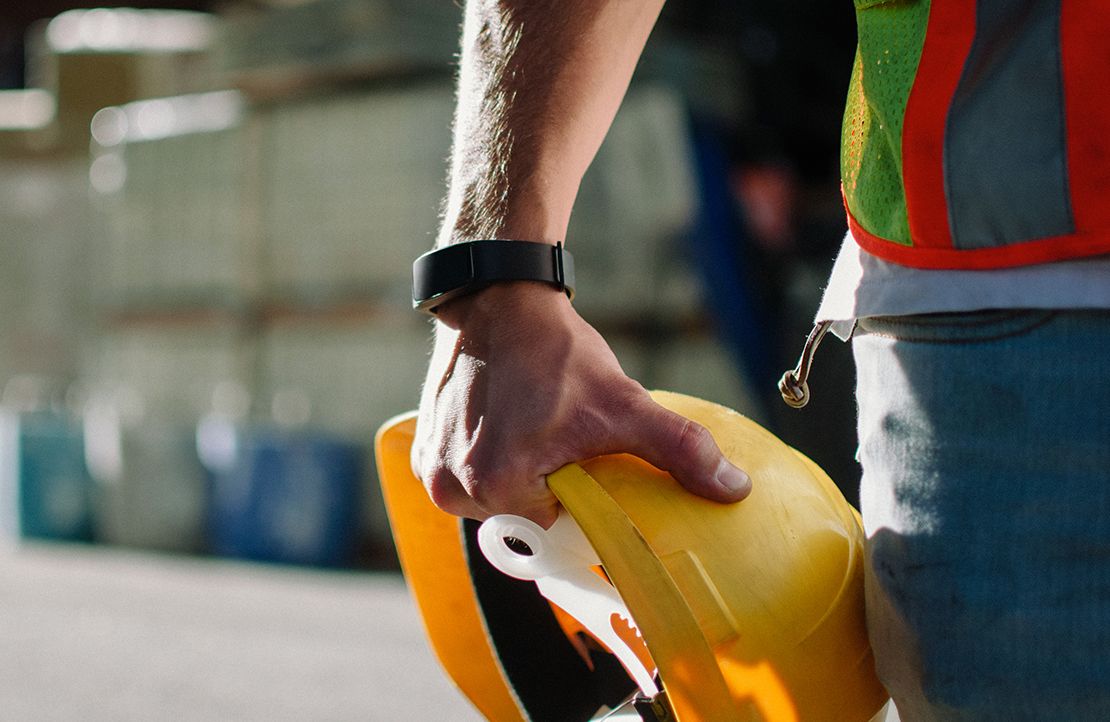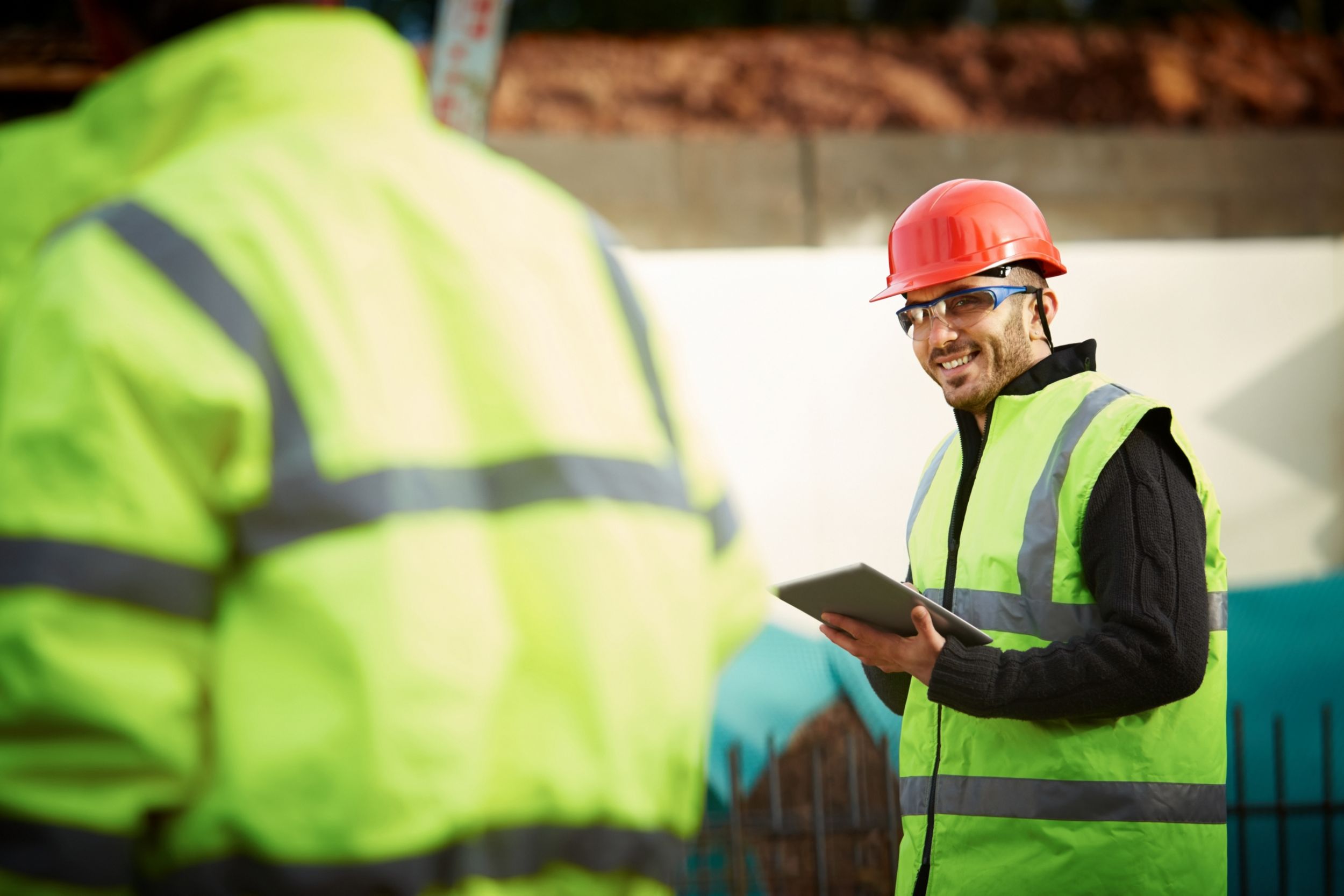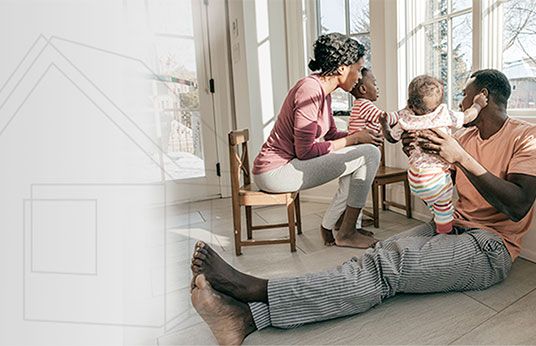

Sign In
Welcome! Sign In to personalize your Cat.com experience
If you already have an existing account with another Cat App, you can use the same account to sign in here
Register Now
One Account. All of Cat.
Your Caterpillar account is the single account you use to log in to select services and applications we offer. Shop for parts and machines online, manage your fleet, go mobile, and more.
Account Information
Site Settings
Security
Developing a Safety Culture at Home.
You know the importance of safety on the jobsite, but developing a safety culture at home is just as important. Check out this Q&A with our very own safety expert Justin Ganschow to learn how.
By Nicole Serena, Contributor | Posted: June 1, 2021 | Revised: March 28, 2022
The safest jobsites are those that have a strong safety culture — where safety isn’t just a set of rules or the managers’ job — it’s everyone’s job and just part of how the work gets done.
But what about when those employees go home? With 90% of medically consulted injuries occurring off the job, developing a safety culture at home is just as important.
We spoke with Justin Ganschow of Caterpillar Safety Services. His team works with businesses to provide safety assessments, workshops, training programs, consulting, and coaching.
Read our Q&A for more on how to develop a safety culture at home:
1. In your work, you help businesses grow their safety programs beyond the basics to a true workplace safety culture. Can you define safety culture for us in layman’s terms? Why is it important at work, and how can it apply at home?
Culture is how we do things. It’s a collection of shared beliefs and practices. In terms of safety culture, it’s how we do the work when nobody’s watching – the tools we use, the methods we use to get the work done.
When we’re at work, there’s a safety net because people are watching. But outside of work, either no one is watching, or people don’t think it’s their job to say anything about safety. So it’s all on us to make the safe choices.
2. Do you find that people who work in safety-conscious industries are naturally more safety conscious at home? Does the safety focus transfer automatically?
It should transfer automatically – it should become a habit, but that’s not always the case.
A few years ago, I was on a work trip speaking with a heavy equipment maintenance company’s safety manager. He told me he doesn’t do all this safety stuff at home because that’s what he has to do at work. I was baffled. This was the safety manager! He didn’t make the connection that the hazards at home are just as dangerous, or more so, than at work.
If we make safety solely about rules and policies without understanding why we take precautions (what’s at stake if we get hurt), then we’re missing the point and missing the opportunity to make a real impact.
3. When people are overly familiar with a situation or task, they start ignoring safety red flags. How can people break the routine and be more safety conscious?
We see this a lot because it’s how the brain works. The first time you do something you spend more time preparing and thinking consciously about it. But the more times you do it, you think about it less and it becomes automatic. Your brain conserves energy this way. The hazard hasn’t changed, but our conscious focus on it has.
The best way to go off autopilot is by stopping and thinking about the task before you get started. Many of our customers do this before they start every shift. The next time you’re about to start a routine task, think about:
How you’re going to do the work
- What’s at stake if something goes wrong
- How you can consciously mitigate the risks
Routinely thinking through your work before, during, and after will help break that unconscious cycle.
4. You describe a safety culture as what people do when no one is watching. That’s a concern of many parents – what are my kids doing when I’m not there? What’s the best way parents can have peace of mind that their kids are being safe?
As parents, I don’t know that we’ll ever stop worrying about our children’s safety, but we can do our best to set them up for success. In addition to modeling safe behavior, it’s also important to teach them good habits they can develop to protect themselves. You can read our How to Talk to Kids About Safety article for specific tips.
5. As an expert in safety, what have you done to develop a safety culture at home? Do you have any examples from others you’d like to share?
I grew up on a farm and we never talked about safety. When I got out on my own, I continued taking all kinds of risks and shortcuts. Besides a few broken bones, stiches and scars, I luckily made it through intact. But there were a few close calls that still shake me up to this day.
I don’t want to see bad things happen to anyone else, which is why I’m doing this job today. And I’ve learned to be prepared:
- I’ve invested in buying the right tools for whatever job I’m doing so I don’t take shortcuts.
- Instead of diving into a complex task or project like I used to, I research it ahead of time to know what I’m getting into.
- When I’ve gone to help friends cut firewood, I’ve taken a bag of safety glasses, gloves and hearing protection in case they didn’t bring any.
- I’ve put fire extinguishers in the house and vehicles.
- When backpacking and hunting, I carry a first aid kit and twice the amount of water I think we’ll need, just in case.
While we don’t like to think about what could go wrong, it’s critical that we do and then prepare for how to mitigate or address it if it does.
6. Being prepared is something you’ve talked a lot about. What’s the best way to prepare for emergencies at home?
While they’re rare occurrences, emergency situations can be life-altering for your family. It’s important to be ready with resources and a plan. We have a section on cat.com dedicated to disaster preparedness, including an emergency supply shopping list and tips for preparing a business disaster plan. There’s also great resources available at sites like the American Red Cross and Ready.gov.
7. What would you say to people who say “formal safety processes are good for jobsites, but they’re overkill for home” or people who feel awkward talking about safety at home? How do you make the safety stuff feel normal?
Home feels like it should be the safest place on earth. And it can be. But it requires us to plan for safety and act accordingly. If you’re working at heights from a ladder, using power tools or chemicals, grilling, or doing landscaping, the hazards may be just as serious, or even more so, than at work. If you’re not proactively safe on the weekend, you may not make it to the job again on Monday.
To me, off-the-job safety is just as critical as safety on the job. To make it “normal,” you have to make it a routine. And to make it a routine, you have to start. And it should be a positive experience.
Start simple and do something small:
- Buy a comfortable set of safety glasses and hearing protection for mowing the lawn.
- Splurge and get some noise-canceling headphones.
- Start catching your family members doing something safe and recognize them for it. You don’t have to make it weird. Just share why it matters to you and that you appreciate it.
With consistency, it becomes the norm.
8. You’ve given a lot of great safety tips today. What’s the biggest takeaway for people when it comes to developing a safety culture at home?
Know that building a culture of safety, whether at work or at home, is a continuous improvement journey. You don’t have to have it all figured out from the start. But you have to start. Safety can be simple, but you have to think and turn your intentions into action.

Justin is a frequent speaker and writer on the impact of culture, leadership, and human biology on workplace safety. With nearly 20 years of experience in environmental education, public health, and private industry, he has led improvement initiatives as a consultant to a variety of industries. Currently, he serves as Business Development Manager with Caterpillar Safety Services in Peoria, Illinois. Justin is a Certified Hazardous Materials Manager (CHMM) and Certified Safety Professional (CSP) with a Bachelor of Science in Environmental Science – Biology and a Master of Science in Biology from Bradley University.



Nicole Serena
Contributor
Nicole is a second-generation Caterpillar employee with a passion for digital marketing. Currently in the brand marketing team, she's spent the past several years managing digital media and content — including Caterpillar's social media program. Nicole lives in central Illinois with her husband and two young boys (and two very active dogs).
Related Stories
-
Tips For Preparing a Business Disaster Plan
A natural disaster disrupts everything from your daily schedule to the ability of your business to continue operations. Read our tips for creating plans and preparing for the worst.
Learn More -
How to Develop an At-Home Safety Plan
Just as you have a comprehensive safety plan at work, you also need one for your family. Read our steps to create an at-home safety plan.
Learn More Safety -
How to Give a Safety Briefing at Home
A safety briefing is a simple routine that will help you and your family stay safer at home. A good place to start is with our S.A.F.E. 4-step process.
Learn More Safety -
How to Talk To Kids About Safety
Talking to kids about personal safety might feel overwhelming, but using the right approach will ensure they learn the valuable safety lessons they need.
Learn More Safety
